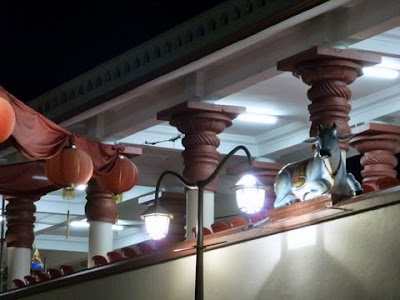If you wander around, especially in Chinatown and in many shopping centres as well, you will find many closed, even on the third day of the Chinese New Year! Since the past decades, the number of days closed for the Chinese New Year (acronym CNY) for the shops has been reduced. In the old days, one could close the shop for as long as nine days. Especially for the Hokkien, they might open their shops after the prayer to the Jade Emperor (more popularly known to the local Hokkiens as Pai Ti Gong or Bai Tian Gong in Mandarin), which happens on the 8th night of the Chinese New Year. For many, they might open the shop on the second of the CNY or a suitable date (which could be advised from the Almanac) for a couple of hours to indicate that the shop has been opened, and then it was closed again.
For many of such family owned businesses, they hardly take any day off in the year and so, the long period off during CNY was the only time off for them.
I remember the days when my late Mother-in-Law used to run a shop at the "old" People's Park selling cloth. She worked every day, Saturday and Sunday included. So, the only days off was just before the Chinese New Year and a few days into the CNY. In the good old days, many people still bought cloth to sew their own clothes or send to the tailor to make. Ready made clothing was not so popular for the ladies. Many of the cloth available were for the making of samfoo (literally translated from Cantonese as blouse and pants). Of course, some of the materials could be made into "modern" and more westernised style blouses or dresses. I used to get some cloth to make shirts too.
There was also the black cloth, in various designs (black of course) and of different make. In the old days, when one reaches 50, it was time to wear black pants and probably blouse (of the samfoo cut) in shades of blue. My Mum was starting to wear less bright coloured clothes when she passed 30! And then, the world changed. Everyone began to wear brighter colours. That must have been an indication to the shops selling cloth, much of which were from Japan.
Some of you might have heard of Japanese cloth brand like Toray. But to the customers, they were not really interested in the brand as in the quality of the cloth, would it stick in the sweaty Singapore, was it reasonably priced. Buying cloth in the old People's Park could be both an adventure and a nightmare if you are not good at bargaining. And you could even risk being scolded if the shop was making its first sale for the day to you and despite giving you the best price, you walked away. Business people could be really superstitious and a first successful sale could mean more successful sales! (^^)
Ah, but I was no salesman and did not understand the intricacies of bargaining and why prices were always offered high. You see the wholesalers would only sell the cloth in sets, meaning if a pattern comes in five colours, the retailers have the buy all five. But one would be lucky if two of the five colours sell. So, the shops have to make up for the other three which could not be sold or sold below cost. Some people got good deals out of the bargain, others don't.
My task was to help to close the shop with the old planks, making sure they are fitted to one another vertically (they are numbered) before finally fitting the door post, and door. These days, one pull of the shutter is good enough.
Come towards the last week or two before the Chinese New Year, sales would have diminished and no one could be able to buy the cloth and got them made in time for the New Year. It was time to do the annual clean up. On a good morning (usually weekends so that we would be around) we would be carrying out the rolls and rolls (or bales) of cloth out of the tiny shop. I often marvel at how much could be put into the tiny shops. Then, it was time to clean the wall, the railings, the fans and yes, perhaps, add a new coat of paint.
Talking out the cloth and dismantling the setup, of which the rolls of cloth were placed such that there would be no cloth avalanche, was easy. Putting them back was a challenge. Ah, new the boss of the shops knew precisely how and where the cloth should be put. It had to be and was important to be able to know where to get specific cloth than a customer might ask for.
After a long day, the job was done and the shop closed, for the next week or two. It was the end of an ardous day and a cleaned shop with new Chinese characters indicating prosperity was ready to greet the new year when it was reopened again.

















































